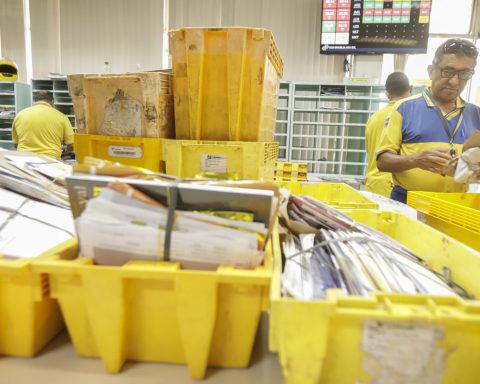Located in the Santo Cristo neighborhood, in the center of Rio de Janeiro, Morro do Pinto is the first community to host the Rua Walls urban art and graffiti festival, responsible for the graffiti walls in the port area. Starting this Saturday (21), the project opens the first part of the open-air gallery in the community, with murals created by national and international artists. The project brings together 20 artists, eight from six foreign countries — Argentina, Mexico, United States, Spain, Italy and Nigeria.
In this year’s edition, the event proposes a new perspective on the role of urban art in transforming cities and building cultural identities. The focus is the revitalization of Morro do Pinto and the port area. “Morro do Pinto was chosen for its rich connection with Rio culture and its historical role in the port area, an area undergoing transformation. With its unique stories and an active community, the neighborhood perfectly represents Rua Walls’ values of revitalization and inclusion”, says the festival’s director, Caique Torrezão.
The event’s director told Brazil Agency that the strategic location of the community in the port region facilitates the dialogue between tradition and modernity, placing the hill on the cultural map of Rio de Janeiro”. Torrezão informed that 20 more murals will be created at the site. In the community, points such as Fábrica Bhering, Bar do Omar and Bar do Molejão will receive artistic interventions. Other locations, such as Largo da Prainha, in the Saúde neighborhood, and the Intercity hotel, in Santo Cristo, are also included in the project map.
Walls Street 2024
Starting in 2019 in Rio de Janeiro, Rua Walls’ proposal is to transform the urban landscape through art. According to Torrezão, this year’s edition covers topics such as sustainability and urban revitalization, highlighting the connection between art, environmental preservation and the recovery of urban spaces; community protagonism, reinforcing the role of Morro do Pinto as a cultural center and valuing local narratives; and connection between global and local, with murals by national and international artists dialoguing with Rio’s history and culture, in addition to expanding discussions about diversity and belonging.
“The 2024 edition expands the proposal by including sustainable initiatives, such as the revitalization of Parque Machado de Assis and the launch of the Refloresta Favela program, demonstrating the festival’s commitment to social and environmental transformation”, highlighted Torrezão. As part of the project, the Morro do Pinto community also receives the Innovation and Reflection Center, a cultural warehouse that will function as a space for exchange, discussion and artistic experience. The opening is scheduled for December this year.
“Carrying out Rua Walls in Morro do Pinto has a significant impact, including community empowerment, as art transforms the neighborhood into an open-air gallery, raising residents’ self-esteem and highlighting the region’s cultural potential,” said Torrezão, who highlighted the project’s commitment to the decentralization of art. “Taking the festival to a space outside the central axis democratizes access to art and promotes the recognition of peripheral areas as cultural hubs.”
*Intern under the supervision of Vinícius Lisboa















